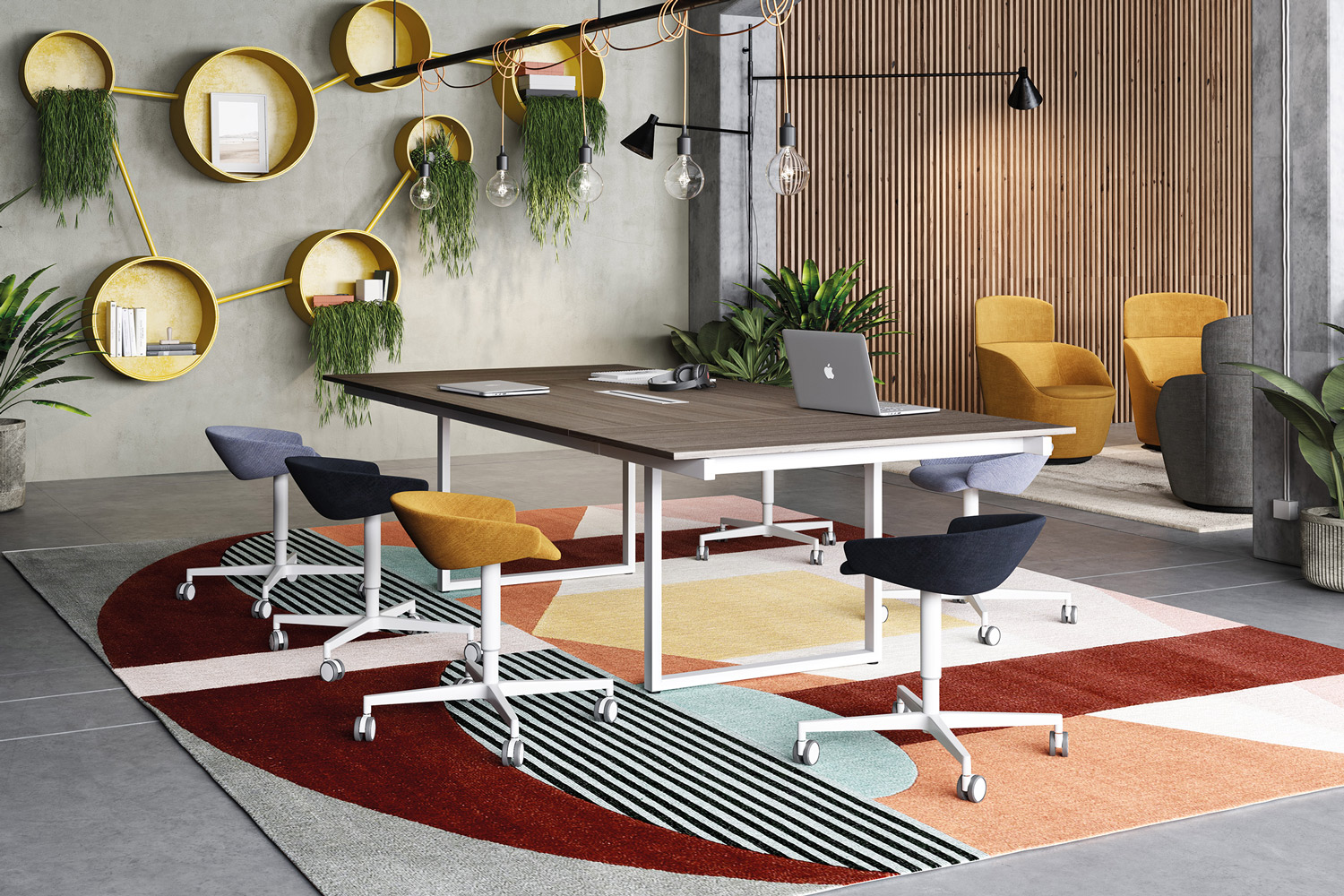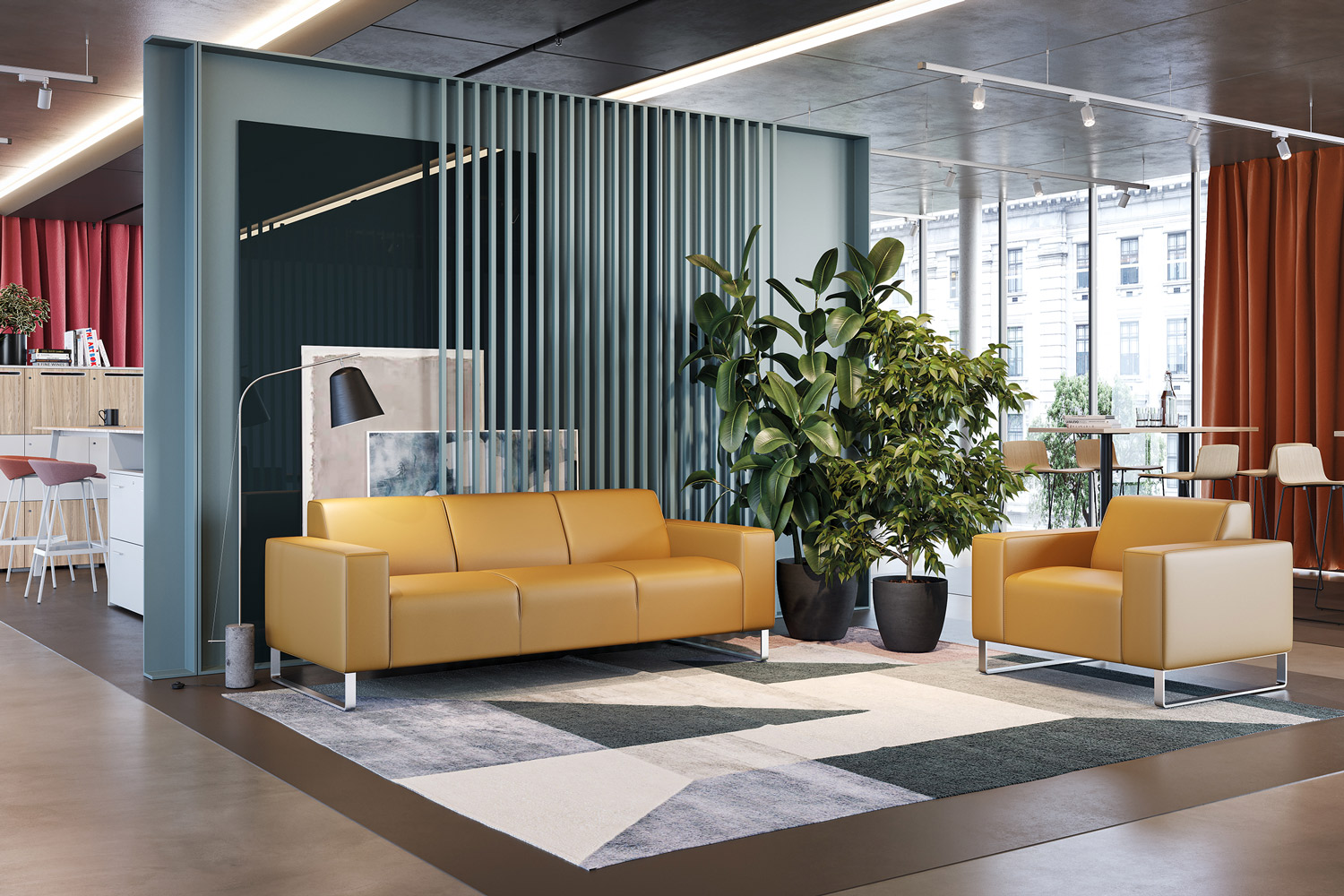The design world is like the fashion world: nothing is destroyed, everything is reinvented.
The resimercial approach to the office world fits into this specific philosophy, rediscovering a trend that had already appeared in design magazines back in 2018 through a lockdown perspective.
What does resimercial mean? The term is simply a syncretism, a fusion of the words residential and commercial.
The leitmotif of this design philosophy is the inclusion of elements that are usually considered domestic in a working context, which makes the environment more comfortable, informal and attentive to people’s well-being, without losing sight of its professionalism.
2021 and resimercial design
2020 has been a difficult year for everyone: we went through lockdowns, we feared returning to the office and we found sharing common spaces with colleagues quite a difficult task.
For many months, most of us worked from the comfort of our own homes, in a non-aseptic context: we had the luxury of sitting on our sofa during long phone calls and the possibility to open windows or move from one room to another when desired.
Going back to the office has allowed us to socially reconnect, but now we’re missing some of the “perks” of working remotely.
Resimercial design aims to respond to this need, recreating a comfortable and relaxed atmosphere in the office in which everyone can (re)find their own space.
What makes the 2021 approach different from the pre-Covid approach?
The need to design workplaces with social distancing in mind has led to the creation of layouts that follow the activity-based approach (based on the company’s functional areas) and the third place concept, which we’ve already discussed in a recent article.
The resimercial movement that began to emerge a few years ago, before the pandemic, may be showing us the new way: embracing workplace design that supports both personal health and a cohesive culture and creating welcoming offices that encourage collaboration.
The open office will still exist, but it will be divided into macro-environments that include more than just classic workstations and meeting rooms: lounge areas, hot desks and informal collaborative areas will be added too.
The ability to move around throughout the day to find the most suitable space for different activities will encourage people to move more and interact more with the corporate ecosystem.
The benefits of resimercial designed spaces
There are no extensive studies on this subject, but empirical analysis has shown that offices with a resimercial design are able to promote the psychological and physical well-being of the user.
This translates into a reduction in stress and physical problems, and a consequent increase in productivity and efficiency.
The common idea sees younger workers as great proponents of remote work, but this is no longer the case: the new generations want a physical but dynamic office, attentive to well-being, where they can be autonomous in the choice of their work spaces, which will be multiple and different throughout the day.
There is also an appeal factor: Millennials and Generation Z are more likely to accept job offers from companies with an informal, light and friendly design. The resimercial approach is therefore becoming a central factor in the acquisition of new talent, especially with a view to long-term growth.

The characteristics of resimercial design
The objective is to create an “antidote to institutional formality”, whilst maintaining the working environment’s professionalism and improving the individual’s comfort and well-being.
Materials, colours and furnishings chosen with resimercial design in mind will include:
- Comfortable seating – Furnishings should include comfortable sofas and armchairs where you can relax or work away from your desk. Extra cushions are a bonus.
- Warm and welcoming colours – prefer shades such as red and yellow, or pastel colour palettes.
- Natural light and ambient light – Loud or aseptic lights should be eliminated in favour of large windows that let in natural light, complemented by lamps and chandeliers that create softer lighting.
- Flexible spaces – Collaboration areas should include easy-to-move seating and tables to organically create new work groups.
- Differentiation of zones – The environment needs to move away from the classic open space layout by showing a distinction between work areas; this can be done through a different room colour, a different type of floor or through removable partitions.
- Home furnishings – The room should be enriched with carpets, lamps and, above all, art.
Other focal points, that have to be integrated into the office design guidelines, are:
Focus on variability. Comfort and character are the driving forces behind resimercial design. In order to provide spaces that suit the multiple working styles of employees, a ‘palette of places’ needs to be developed, from open rooms that facilitate collaboration and communication, to quiet, secluded spaces where people can connect and immerse themselves in projects.
Focus on durability. One aspect to consider when choosing furniture is its constant and prolonged use. The lack of care that various employees or visitors might have of these elements must be considered too. The resimercial trend is leading many companies to offer lines of home inspired furniture home but of excellent workmanship and quality, suitable for intensive use. Particular attention should also be paid to the choice of fabric for armchairs and sofas as they tend to wear more easily.
These represent additions to a classic design: functionality and ergonomics always come first. The trick is to make everything more welcoming!

